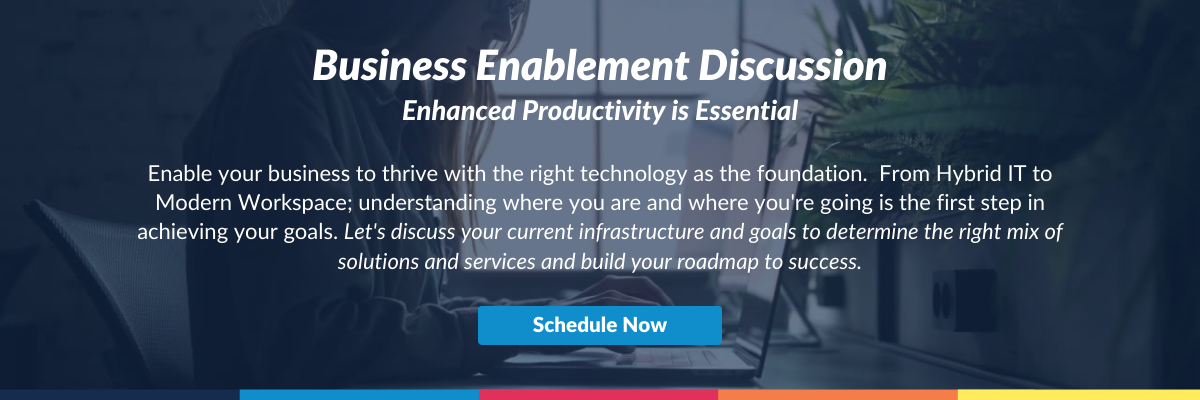Strategies for improving the B2B buying experience constantly changes. However, we're very interested in the B2B buying experience because of the new technologies that influence it. That's why we've written 8 ways to improve the digital B2B buying experience.
With smart tools such as AI recognition and intelligent chatbots, personalizing the buying experience becomes more convenient. Adopting those personalization options for the unique needs of B2B markets is essential to honing the B2B buying experience.The B2B buying experience is constantly evolving due to advancements in technology and changing customer expectations. In order to stay ahead of the curve and provide a seamless digital buying experience, it is important for businesses to adapt and implement strategies that cater to these changes. Here are eight ways to improve the digital B2B buying experience:
Ways to Improve the B2B Buying Experience:
1. Identifying the buyer's "need-recognition" moment
Understanding the full business-to-business buying process is important before you can improve the experience. The B2B process includes many more people.
First, there is a need-recognition that must happen. The business needs to recognize what the company's needs are before a purchase. Salespeople, IT, third parties, or even competitors of the business can help influence the decision.
After, the process of scaling the purchase requirements and determining who the company should work with comes next. A good example is buying a mass quantity of computer systems. Which supplier can help the business acquire 40,000 IT units?
At this stage, the company will look at who their supplier options are, and how they stack up to the scale of the need recognition process. A local computer supplier, like Best Buy, may not have as many units as necessary in stock. Ordering directly from an IT manufacturing and supplier warehouse may be what is needed instead.
2. Recognizing when your company enters the B2B buying process
Recognizing when your company enters the B2B buying process is crucial for effectively managing and streamlining the sales process. By understanding the stages a company goes through before reaching out to potential suppliers, you can position your business strategically and maximize your chances of securing the deal. Here are some key stages to recognize:
-
Need Recognition: The first stage in the B2B buying process is when a company identifies a need or problem that requires a solution. This could be due to internal changes, customer demands, market trends, or other factors. It is essential to monitor industry news, market trends, and customer feedback to identify potential opportunities and align your offering with their evolving needs.
-
Research and Evaluation: Once a company recognizes a need, they will embark on a research and evaluation phase. During this stage, they will gather information and explore potential solutions. It is important to create and promote awareness about your products or services through various channels, such as industry events, content marketing, social media, and search engine optimization. Being visible and providing valuable information during the research phase will increase your chances of being considered as a potential supplier.
-
Shortlisting: After conducting research, the company will create a shortlist of potential suppliers who meet their requirements. This stage involves evaluating different vendors based on criteria such as reputation, expertise, cost, quality, and customer reviews. By building a strong brand image, providing exceptional customer service, and showcasing your expertise, you can increase your chances of making it onto their shortlist.
-
Contacting Potential Suppliers: Once a company has identified a shortlist of potential suppliers, they will reach out to initiate contact. This may involve requesting additional information, scheduling meetings, or submitting formal requests for proposals (RFPs). It is essential to respond promptly and professionally to these inquiries, demonstrating your commitment and willingness to meet their needs. Be prepared to provide detailed information about your products or services, pricing, delivery timelines, and any other relevant information they may require.
-
Sales Negotiation: If your company successfully navigates the previous stages and is shortlisted as a potential supplier, you will enter into a sales negotiation process. This stage involves discussing terms, pricing, contracts, and other details. It is important to have a clear understanding of your value proposition and differentiate yourself from competitors. Focus on building a mutually beneficial relationship, understanding the buyer's needs, and addressing any concerns or objections they may have.
-
Decision and Implementation: After the negotiation stage, the company will make a final decision on which supplier to choose. Once selected, they will proceed with implementing the chosen solution. During this stage, it is important to provide support and assistance to ensure a smooth transition and successful implementation. By offering comprehensive training, ongoing support, and a seamless onboarding experience, you can secure customer satisfaction and potentially gain repeat business in the future.
3. Understand how offline payment options impact the online B2B buying process
Experts commenting on the B2B buying experience for PYMNTS.com news claim that companies should strive to offer “Amazon-like” experiences for the buyer. However, pricing and payments, in the B2B world, look incredibly different than they do in a typical brick-and-mortar, offline world. PYMNTS news claims that in order to have a successful B2B buying process as similar, one must reproduce it like the average consumer buys offline. For example, offering consumers the option to buy it fully or to pay for products in installments is necessary for large purchases like investing in the latest iPhone.
4. Finding a balance between tools and buyers' needs

The science of the B2B buying experience is a fine balance between smart tools and practical application. B2B marketers are the most critical of the sales experience. It is this expertise that drives B2B marketers to shine at the top of their game in the marketplace.
However, the B2B buying experience is an arduous journey. In the March-April 2017 issue, Harvard Business Review described the B2B buying experience as “hard, painful, deeply uncertain, stressful, a deluge of information, frustrating,” and some described it as “a minefield.”
This issue that HBR noted is that decision-makers spent time waiting for a sales rep before purchasing. Suppliers tend to make the sales process too complex because they are focused on what they are selling, rather than the buyer's needs. HBR’s 2017 survey metrics found that the suppliers thought were succeeding in making buying easier.
5. Proactive data gathering and practical application
One issue B2B strategists face is the practical application of data. Either they will gather data and never review it or they will not gather any applicable data at all. By default, tools should have data gathering and data application, but brands must practically fine-tune this data gathering. B2B strategists have to source data in order for the data to be useful in a real-world buyer’s journey.
6. Full service is the secret
Full service includes the tech that allows the customer to seek full self-service. The idea is to provide as many service avenues as practical and to give the customer a route that makes sense to them. Each buyer has a unique buying process and habits. For example, replacing a chat app with a voice-over walkthrough is not always efficient for all customers.
Some customers may prefer the chat app option to directly communicate with the chatbot and converse with the brand, rather than be told how and why to buy. The customer may have more nuanced or complex interests in the brand than an automatic sales pitch would be able to satisfy the customer's need.
7. Reach above customer expectation
Reaching above customer expectations is a mindset that goes beyond simply meeting their needs. It involves going the extra mile to surprise and delight customers with exceptional experiences, products, and services. By adopting this mentality, you can differentiate yourself from competitors and cultivate long-lasting customer loyalty. Here are some key strategies to help you reach above customer expectations:
-
Understand and anticipate customer needs: Take the time to truly understand your customers, their pain points, and their goals. Use market research, customer feedback, and data analytics to gain insights into their preferences and expectations. By proactively identifying their needs, you can tailor your offerings to exceed their expectations.
-
Personalize the customer experience: Customers appreciate personalized experiences that make them feel valued and understood. Leverage technology and data to customize your interactions, offers, and recommendations based on individual preferences. This can include personalized emails, recommendations based on past purchases or browsing history, and targeted marketing campaigns.
-
Provide exceptional customer service: Make customer service a top priority and strive to deliver outstanding support at every touchpoint. Train your customer service team to be knowledgeable, empathetic, and responsive. Consider implementing self-service options, such as knowledge bases or chatbots, to provide quick and convenient solutions to customer queries. Promptly address any issues or complaints and go above and beyond to resolve them.
-
Exceed product quality and performance: Delivering products and services that consistently exceed customer expectations is essential for building loyalty. Continuously invest in research and development to improve the quality, functionality, and performance of your offerings. Regularly gather customer feedback to identify areas for improvement and implement changes accordingly.
-
Surprise and delight: Look for opportunities to surprise and delight your customers. This could involve unexpected bonuses, exclusive offers, personalized thank you notes, or special events. By going that extra mile to exceed their expectations, you create memorable experiences that leave a lasting positive impression.
-
Foster open communication: Encourage customers to provide feedback and actively listen to their suggestions and concerns. Create channels for customers to share their thoughts, such as surveys, online reviews, or social media platforms. Use this feedback to continuously improve your products, services, and overall customer experience.
-
Continuously innovate: Stay ahead of customer expectations by embracing innovation and staying up to date with industry trends. Invest in research and development to explore new technologies, features, or services that can enhance your offerings. Anticipate future needs and be proactive in providing innovative solutions before customers even realize they need them.
-
Provide value-added services: Look for opportunities to go beyond your core offering and provide value-added services. This could include educational resources, informative blogs or webinars, access to exclusive events or industry insights, or complimentary add-ons. These additional services not only differentiate your business but also demonstrate your commitment to customer success.
By adopting a mentality of reaching above customer expectations, you set yourself apart from competitors and build strong customer relationships based on trust and loyalty. By consistently delivering exceptional experiences and exceeding customer expectations, you turn customers into advocates who enthusiastically recommend your brand to others. Remember, customer satisfaction is not the end goal – it's about creating customer delight at every touchpoint.
8. B2B buying experience and long-term relationships
Customer loyalty comes from a personal and pleasant buying experience. By using the tools that specifically target an improved B2B buying experience, the B2B sales team builds long-term relationships with buyers.

.png)